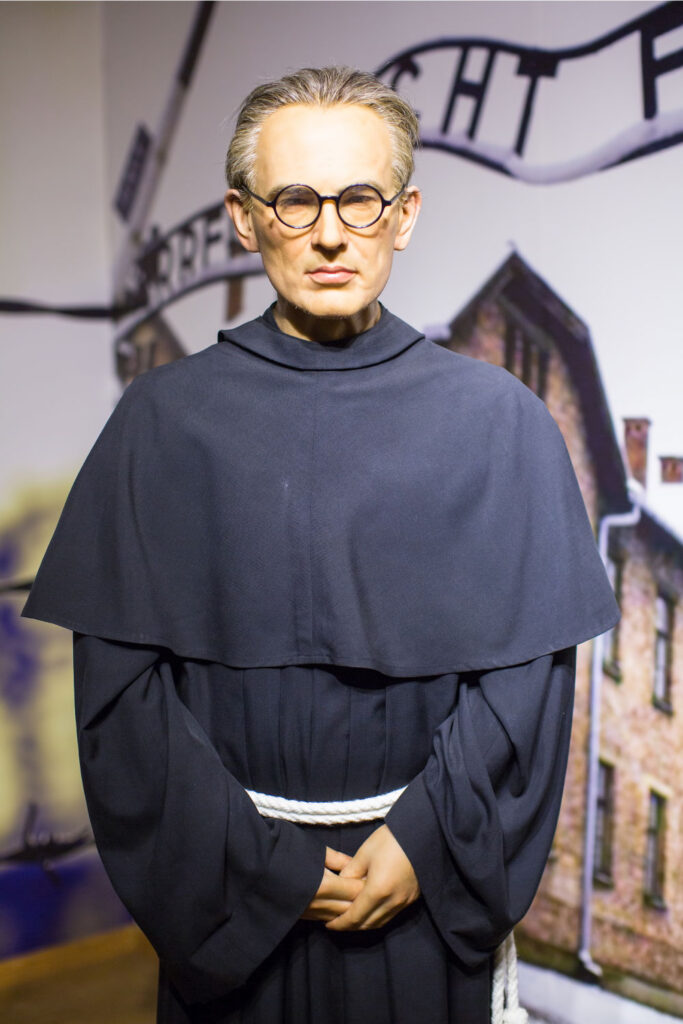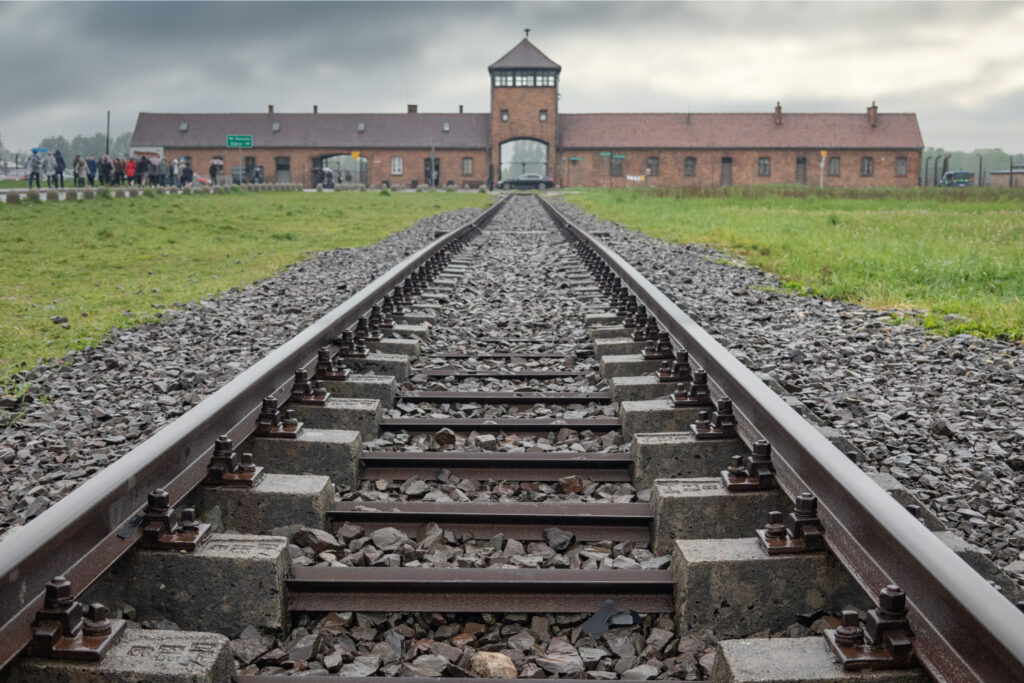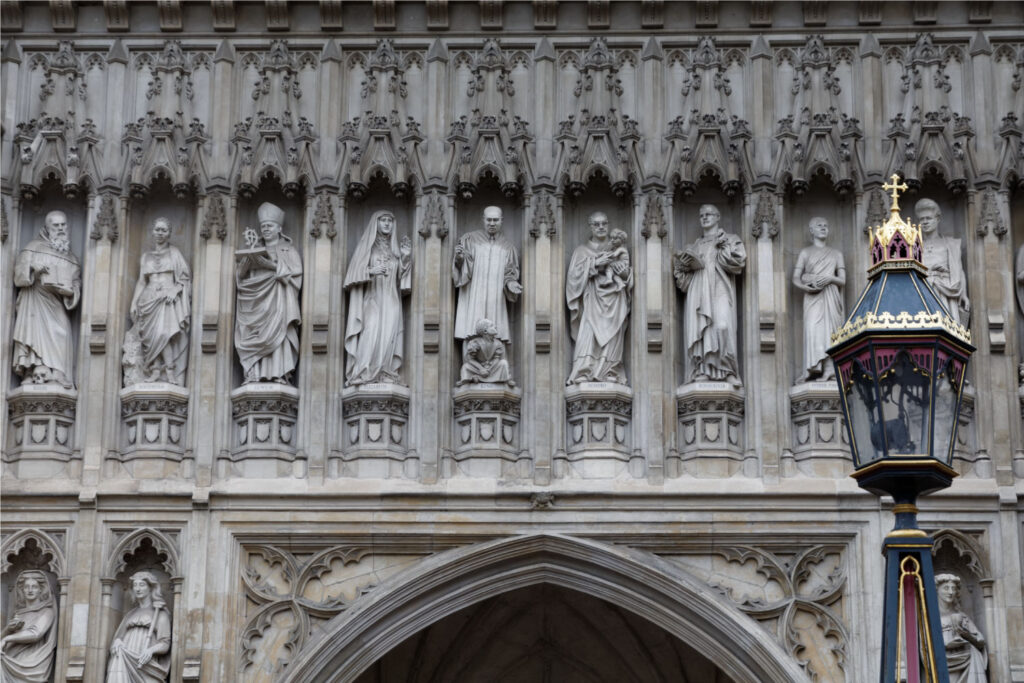Born Rajmund Kolbe in 1894, in Poland, he was the second of five sons to a German father and a Polish mother. His spiritual life really began when in 1906, aged 12, he experienced a vision of the Virgin Mary holding two crowns, one white, one red. The white one meant he should persevere in purity, the red that he should become a martyr. She asked if he was willing to accept one of the crowns; he replied he would accept them both.
The following year, Kolbe and his older brother Francis joined the Conventual Franciscans. In 1910 Kolbe entered the novitiate and chose the religious name Maximilian. He professed his first vows a year later and his final vows in 1914, adopting the additional name of Maria. He was sent to Rome in 1912 to continue his studies and earned a doctorate in philosophy in 1915, followed by a doctorate in theology.
As the war broke out across Europe, Kolbe’s father fought for an independent Poland but was caught and hanged as a traitor by the Russians. Kolbe witnessed demonstrations in Rome against Popes Pius X and Benedict XV during an anniversary celebration by the Freemasons. In response, he organised the Militia Immaculata (Army of the Immaculate One) with the intention to convert sinners and enemies of the Church, in particular the Freemasons, with the intercession of Mary.
He was ordained a priest in 1918, continuing to promote Mary throughout Poland. He founded a monthly periodical titled Rycerz Niepokalanej (Knight of the Immaculate). He ran a religious publishing press and founded a Conventual Franciscan monastery at Niepokalanow which he built into a significant publishing centre.

Kolbe travelled further afield, as far as Japan and India, setting up monasteries in both countries. The Japanese monastery is still important in the Roman Catholic Church in Japan today.
Poor health forced Kolbe’s return to Poland in 1936 and as Germany began to invade, he elected to stay at the monastery, sending the other brothers away for safety. When the town was captured he was imprisoned for three months but refused to sign a document that would confirm his German citizenship owing to his German ancestry. When released he continued to work in his monastery, providing shelter for refugees, including hiding 2000 Jews from German persecution.
In 1941 the monastery was shut down and Kolbe was arrested by the Gestapo and taken to Pawiak prison. From here he was transported to Auschwitz. He was subjected to extreme persecution but never turned his back on his priesthood. After a few weeks in the concentration camp, men were selected to be starved to death to warn against escape attempts. Kolbe was not among those chosen but volunteered to take the place of a man with a family.

During his final days Kolbe calmly led the prisoners in prayers to Our Lady. He was the last to die after two weeks without food or water. Finally, the guards injected him with carbolic acid to bring about his death.
Maximilian Maria Kolbe died 14th August 1941. The cell where he died is now a shrine. He was beatified as Confessor by Pope Paul VI in 1971 and canonised as Martyr by Pope John Paul II in 1982. His image is found in churches across Europe and his statue is one of ten depicting 20th century martyrs in Westminster Abbey, London. It can be found at the far left of the row of statues.

